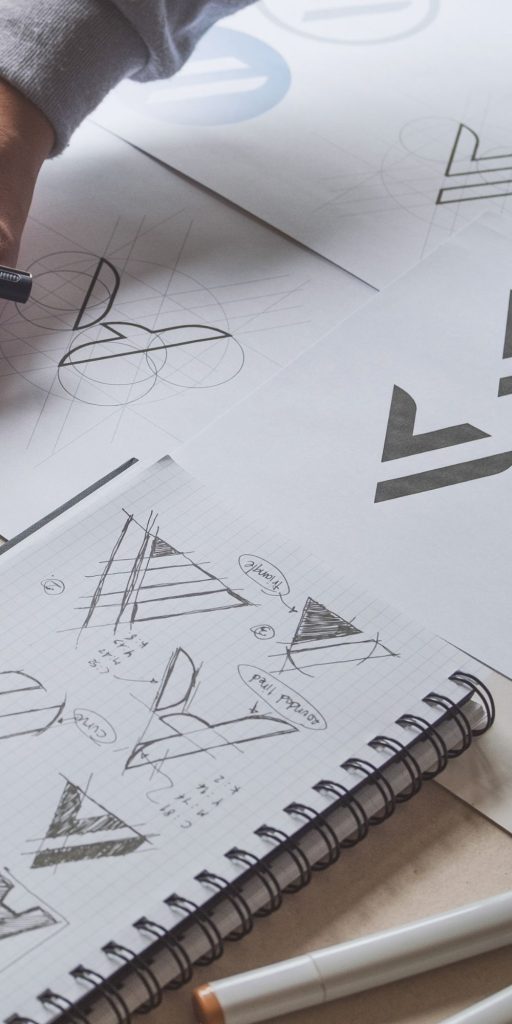The Guide to a Successful Logo Design

Logo Design
In today's competitive business landscape, a well-designed logo it can be the difference between business success and obscurity. The fusion of creativity and business is evident in the art of logo design, where striking graphics and strategic messaging combine to create a lasting ID card brand name. But mastering the art of logo design goes beyond simply creating a visually appealing image. It requires a deep understanding of the target audience, business goals and brand voice.
The importance of a logo for business
The logo it is the face of a business. It is the first thing that comes to mind when people think of a brand. A well-designed logo can help a business stand out from the competition, build credibility and leave a lasting impression on potential customers. It acts as a visual representation of the brand's values, personality and unique selling proposition.
One logo it's not just a pretty picture. it is a strategic tool that can communicate the essence of a brand with a single glance. It has the power to evoke emotions, convey messages and create a connection with the target audience. A powerfull logo may build trust and loyalty among customers, making them more likely to choose a brand over its competitors.
Essentials of effective logo design
Effective logo design requires careful consideration of various elements that contribute to a cohesive and compelling brand identity. These elements include colors, shapes, typography and images. Each element plays a key role in conveying the desired message and creating a visual representation that resonates with the target audience.
Colors have a profound effect on human psychology and can evoke specific emotions and associations. For example, vibrant and energetic colors like red and orange can convey excitement and passion, while calm and soothing colors like blue and green can evoke feelings of trust and peace. The choice of colors in a logo should align with the brand's personality and values, as well as the desired customer perception.
Shapes and typography also play an important role in logo design. Curved shapes tend to convey a sense of warmth, friendliness and approachability, while angular shapes can evoke feelings of strength, stability and professionalism. Likewise, typography can convey various characteristics such as elegance, playful mood or seriousness. The choice of shapes and typography should be in line with the brand identity and target audience.
Understanding the psychology of color in logo design
The psychology of colors is a critical aspect of its design logo which can significantly influence the perception and acceptance of a brand. Different colors evoke different feelings and associations, and understanding the psychology behind these colors can help designers create logos that effectively communicate the desired message.
Red, for example, is often associated with energy, passion and excitement. It can grab attention and create a sense of urgency, making it a popular choice for brands in industries such as food, entertainment and technology. Blue, on the other hand, is often associated with trust, reliability and professionalism. It is commonly used by brands in industries such as finance, healthcare and technology, where reliability and stability are essential.
Understanding color psychology can also help designers avoid potential pitfalls. For example, using too many colors in a logo can create confusion and reduce impact, while using inappropriate colors can send mixed messages or alienate your target audience. It's important to find the right balance and harmony between colors to create a logo that resonates with customers and effectively communicates the brand's personality and values.
Logo design trends for business success
Design trends logos they are constantly evolving, influenced by cultural changes, technological developments and changing consumer preferences. Staying current with these trends can help entrepreneurs create logos that feel fresh, modern and related.
A current trend is to use minimalist designs. Minimalism focuses on simplicity, using clean lines and minimal elements to create an elegant and timeless logo. This approach is popular among brands that want to convey a sense of sophistication, elegance and modernity.
Another trend is the use of handmade elements. Handcrafted logos can create a sense of authenticity, uniqueness and craftsmanship. This approach is often used by brands that want to create a more personal and human relationship with their audience.
Additionally, incorporating gradients and vibrant colors is a popular trend in logo design. Gradients add depth and dimension to a logo, while vibrant colors can make it stand out and grab attention in a crowded marketplace. This trend is often seen in brands targeting a younger audience or in industries such as technology and fashion.
The process of creating a memorable logo
Creating a memorable logo is a multi-step process that includes research, brainstorming, sketching, refining and final execution. Each step is critical in ensuring that the logo accurately represents the brand and resonates with the target audience.
The process begins with researching the industry, competitors and target audience. This research helps designers gain insights into the market landscape, identify opportunities for differentiation, and understand target audience preferences and expectations.
After the research phase begins the brainstorming and sketching stage. Here the designers explore various concepts, ideas and visual representations of the brand. Sketching allows for quick iterations and experimentation, helping designers narrow down options and refine the logo concept.
Once a promising idea is selected, it goes through the refinement stage. This includes fine-tuning details, adjusting proportions, and making sure the logo works well in different sizes and media. Stakeholder feedback and target audience testing can be valuable at this stage to ensure the logo resonates with your intended audience.
Finally, the selected logo performed in its final form. This includes creating digital files, choosing appropriate colors and typography, and ensuring the logo is flexible and scalable for various applications including print, digital and merchandise.
Tips for designing a logo that reflects your brand identity
The design of one logo that accurately reflects a brand's identity requires a thoughtful and strategic approach. Here are some tips to consider when creating a logo:
Understand your brand: Before starting the design process, have a clear understanding of your brand's personality, values and unique selling proposition. This will guide your design choices and help you create a logo that aligns with your brand identity.
Know your target audience: Research and understand your target audience's preferences, expectations and cultural influences. Think about how your logo might resonate with them and make a connection.
Keep it simple: A simple and clean logo is more likely to be memorable and versatile. Avoid clutter and unnecessary elements that can distract from the main message.
Choose the right colors: Choose colors that align with your brand personality and evoke the desired emotions and associations. Explore the psychology of colors and how they can affect perception.
Consider scalability and flexibility: Make sure your logo works well in different sizes and media. It should be recognizable and legible whether it's on a small business card or a large billboard.
Testing and gathering feedback: Solicit feedback from stakeholders, target audiences and design professionals. This feedback can provide valuable information and help you improve your logo design.
Hiring a professional logo designer vs DIY logo design
When it comes to logo design, entrepreneurs often face the dilemma of whether to hire a professional designer or attempt a DIY approach. Both options have their pros and cons, and the decision ultimately depends on factors such as budget, time constraints, and design expertise.
Hiring a professional logo designer offers many benefits. They have the skills, knowledge and experience to create a logo that accurately represents your brand and resonates with your target audience. They can provide valuable information and suggestions based on their expertise, ensuring your logo is of high quality and meets industry standards. Additionally, a professional designer can save you time and effort, allowing you to focus on other aspects of your business.
On the other hand, DIY logo design can be a cost-effective option, especially for entrepreneurs with limited budgets. There are many online tools and resources available that offer user-friendly interfaces and pre-designed templates. However, DIY logo design requires a significant investment of time and effort to learn the necessary skills and create a logo that meets your expectations.
Ultimately, the choice between hiring a professional designer or taking a DIY approach depends on your specific circumstances, budget and desired level of quality.
Conclusion: The impact of a well-designed logo on business success
A well-designed logo can significantly influence the success of a business. It acts as a visual representation of a brand's identity, values and unique selling proposition. A logo that resonates with customers can build credibility, differentiate a brand from its competitors and create a lasting impression.
Knowing how to combine creativity and business in logo design requires a deep understanding of your target audience, business goals and brand voice. By incorporating the right colors, shapes and typography, a logo can effectively communicate a brand's personality, values and unique selling proposition. Staying current with logo design trends and following a strategic design process can further enhance a logo's impact and relevance.
Whether you choose to hire a professional logo designer or take a DIY approach, investing in a well-designed logo is a worthwhile investment for any entrepreneur who aspires to succeed in today's competitive business landscape. A strong logo can lay the foundation for a strong brand identity, leaving a lasting impression on customers and contributing to business success.



Interest Form